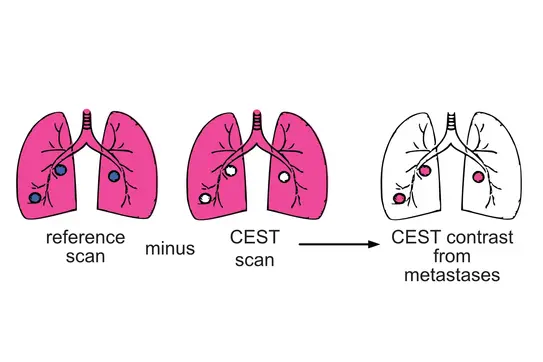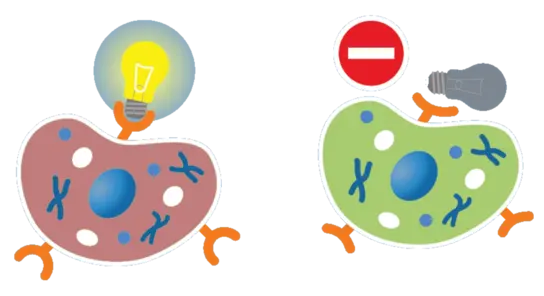Lung metastases reporters
The possible formation of metastases in the lungs in breast cancer requires the earliest possible diagnosis. Conventional anatomical imaging only makes this process visible when it is already relatively advanced. With the development of a hyperpolarized sensor that explicitly binds to the LHRH receptor of cancer cells, the aim is to detect these cells at an early stage.


A key component of this project is to demonstrate the high specificity of the new reporter. Using functionalized liposomes, which provide a contrast that can be switched on by Xe hosts as hyper-CEST contrast agents, only cells with a high number of the corresponding surface receptors are to be detected. Inconspicuous cells will not bind the reporters and therefore will not light up in the xenon MRI.